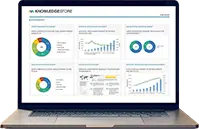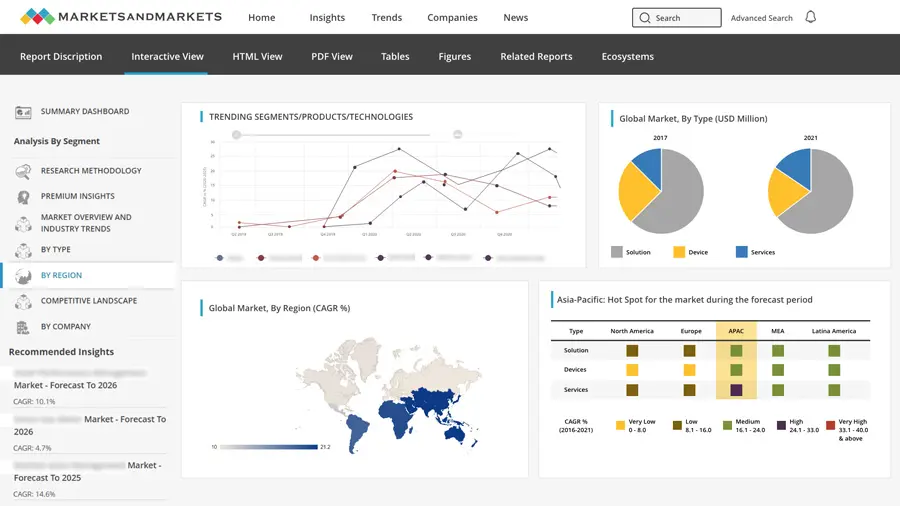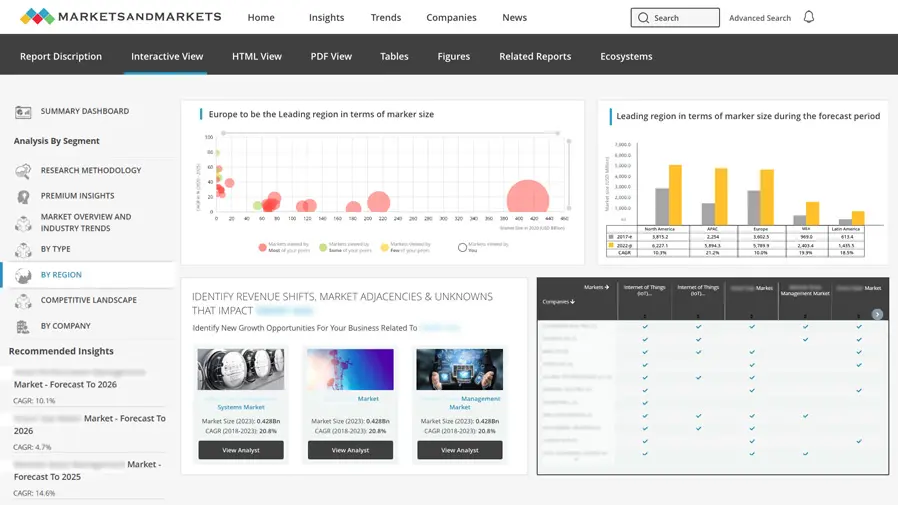Infrared Paint Drying Market–Forecast to 2029
The global Infrared Paint Drying market growth is driven by rapid automotive refinishing adoption, energy efficiency, technological advancements, high-quality finishing demand, industrial applications, smart infrared solutions, and strict low-VOC emission regulations.
The infrared paint drying market is poised for significant growth over the forecast period, driven by accelerated curing times, energy efficiency, advanced technologies, and compliance with VOC regulations. Despite challenges such as high initial investments, limited awareness in emerging regions, compatibility issues with certain paints, IoT-enabled smart solutions, and high-quality finishes for premium industries make infrared paint drying a valuable investment for automotive and industrial manufacturing sectors aiming to modernize their manufacturing efficiency and quality enhancement.
Market Overview:
The Infrared Paint Drying Market encompasses technologies utilizing infrared radiation for rapid, efficient drying of paints and coatings across industries like automotive, aerospace, furniture, and industrial manufacturing
Flow Type
- Portable/Mobile Infrared Paint Dryers: Lightweight, movable units enabling flexible, on-site paint drying for small-scale projects and localized industrial applications.
- Fixed IR Drying Systems: Stationary, permanently installed paint drying equipment integrated into manufacturing lines for consistent, high-volume coating processes.
- IR Tunnels and Ovens: Enclosed, continuous conveyor-based systems providing uniform heat distribution for large-scale industrial painting and coating operations.
- IR Heaters: Compact, directional heating devices focusing infrared energy precisely on specific paint surface areas for targeted drying.
- UV Hybrid Systems: Advanced drying technology combining ultraviolet and infrared radiation for faster, more efficient curing of specialized coatings.
Wavelength
- Short-Wave Infrared (SWIR): High-energy infrared radiation with fast absorption, ideal for quick drying of coatings on metal, plastic, and other surfaces.
- Medium-Wave Infrared (MWIR): Moderate energy infrared radiation used for efficient drying of thick coatings, offering balanced heat penetration and curing speed.
- Long-Wave Infrared (LWIR): Lower energy infrared radiation suitable for curing thick layers of paint, providing slower but more uniform heat distribution.
- Hybrid Systems (UV + IR): Combination of ultraviolet and infrared technologies, optimizing curing speed and quality by utilizing both UV's rapid curing and IR's deep penetration.
Application
- Wood Coatings: Infrared paint drying systems efficiently cure wood coatings, ensuring uniform drying, improved finish quality, and faster production in furniture manufacturing.
- Metal Surface Coatings: Infrared drying technology enhances the curing of metal coatings, providing consistent heat distribution and reducing curing time in automotive and industrial applications.
- Plastic and Composite Coatings: Infrared systems offer efficient drying for plastic and composite coatings, ensuring uniform curing without damaging delicate surfaces in various manufacturing processes.
- Powder Coating Industry: Infrared drying accelerates the curing of powder coatings, ensuring uniform heat application, enhanced finish quality, and higher throughput in industrial coating processes.
End User
- Automotive: Used in vehicle body painting, parts coating, bumper refinishing, and automotive component surface treatment processes.
- Aerospace: Applied in aircraft component painting, maintenance coating, interior panel finishing, and aerospace structural element treatment.
- Industrial Manufacturing: Utilized for machinery coating, metal fabrication surface treatment, industrial equipment painting, and precision component finishing.
- Construction: Employed in metal framework coating, architectural element painting, prefabricated component finishing, and protective surface treatment.
- Furniture and Woodworking: Used for wood panel coating, furniture surface finishing, decorative element painting, and protective wood treatment.
- Consumer Goods and Electronics: Applied in appliance coating, electronic device surface treatment, consumer product painting, and precision component finishing.
- Others: Includes marine industry, agricultural equipment, medical device manufacturing, and specialized niche industrial coating applications.
Region
- North America
- Europe
- Asia Pacific
- Rest of the World
Market Dynamics
Driver: Increasing focus on sustainable manufacturing to drive infrared drying market growth
The growing emphasis on sustainable manufacturing practices is significantly propelling the adoption of infrared drying technology. Infrared drying systems are renowned for their energy efficiency and reduced carbon footprint, making them an ideal solution for industries prioritizing eco-friendly operations. By minimizing energy consumption and emissions compared to traditional drying methods, infrared technology aligns perfectly with global environmental regulations and corporate sustainability goals. Key sectors such as food processing, textiles, and automotive coatings are leveraging infrared drying to optimize processes while meeting stringent green standards. This shift towards greener operations not only enhances operational efficiency but also strengthens brand reputation, driving higher investments in infrared drying solutions across industries worldwide.
Restraint: Maintenance complexity limiting infrared drying adoption
One significant restraint in the infrared drying market is the high maintenance and operational expertise required for these systems. Infrared drying equipment demands regular calibration to ensure optimal performance, precise heat distribution, and energy efficiency. Additionally, the technology often requires skilled operators to manage its advanced settings and address technical issues. Industries with limited access to technical expertise or constrained budgets for specialized staff may find this challenging. This issue is particularly evident in small to medium-sized enterprises, where resource limitations can hinder the adoption of infrared drying systems. The need for consistent upkeep and skilled maintenance can lead to operational downtime and increased costs, posing a barrier to the widespread implementation of infrared drying technologies.
Opportunity: Integration of renewable energy with infrared drying systems to propel the market growth
The integration of renewable energy sources, such as solar panels, with infrared drying systems is revolutionizing energy-intensive industries. This innovative approach offers a dual advantage of reducing operational costs while aligning with global sustainability goals. Infrared drying systems, when powered by renewable energy, provide a highly efficient and eco-friendly solution for sectors like food processing, textiles, and pharmaceuticals. These systems significantly reduce carbon emissions, helping industries meet stringent environmental regulations and enhance their green credentials. As businesses increasingly prioritize sustainable manufacturing practices, the demand for renewable energy-powered drying solutions is set to surge. This opportunity not only supports industries in reducing their environmental footprint but also positions infrared drying as a cornerstone technology in the transition to a low-carbon economy.
Challenge: Limited Material Compatibility Restricts Adoption
Infrared drying faces a significant challenge due to its limited compatibility with certain materials, particularly in industries dealing with complex or heat-sensitive products. While infrared technology excels in providing rapid and efficient drying, its application is constrained when materials have low thermal tolerance or uneven surfaces that affect heat absorption. For example, industries like pharmaceuticals or electronics, which handle delicate components, may find traditional drying methods more reliable. Additionally, materials requiring specific moisture retention levels or sensitive to surface overheating are less suited for infrared drying. These limitations restrict its widespread adoption, particularly in sectors with diverse product compositions. Addressing these material compatibility issues through innovative emitter designs or hybrid systems could unlock broader applications for infrared drying technology.
Competitive Landscape:
Key players in the Infrared Paint Drying market include:
- ATS ELGI.
- Blowtherm S.p.A
- Casso-Solar Technologies LLC.
- Excelitas Noblelight
- EISENMANN GmbH
- Garmat
- GEW (EC) Limited
- Heraeus Noblelight
- IST METZ GmbH & Co.
- IRT Systems
- Nordson Corporation.
- Solaronics
- VULCAN IR Systems
These companies focus on innovation, strategic partnerships, and acquisitions to enhance their market presence and product offerings.
Future Trends:
- Smart Integration and Industry 4.0: The future of the infrared drying market is poised for a transformative shift with the integration of smart technologies and Industry 4.0. Advanced infrared drying systems will leverage AI-driven predictive maintenance, enabling real-time performance monitoring and ensuring minimal downtime. This integration will allow for automated process optimization, enhancing manufacturing efficiency by adjusting drying parameters based on real-time data. By incorporating sensors and data analytics, manufacturers will be able to achieve precise control over temperature, humidity, and drying times, ensuring consistent product quality. The move towards smart infrared drying systems will not only improve operational efficiency but also drive cost savings by minimizing energy consumption and reducing human intervention. This trend will be crucial in industries seeking to streamline operations and stay competitive in a rapidly evolving technological landscape.
- Hybrid and Multi-Spectrum Drying Systems: The future of the infrared drying market is moving towards hybrid and multi-spectrum drying systems, which combine various radiation spectrums such as infrared, ultraviolet (UV), and microwave technologies. This convergence will enable faster, more uniform, and versatile drying processes, especially in coating applications. By integrating multiple energy sources, these advanced systems will enhance the drying efficiency, reduce processing times, and improve product consistency. The ability to fine-tune the spectrum of radiation based on material requirements will allow industries to achieve optimal results, particularly in heat-sensitive and complex substrates. As industries demand higher precision and speed in their manufacturing processes, these hybrid drying systems will offer a significant competitive edge by providing more energy-efficient and versatile drying solutions for a wide range of applications
- Nanotechnology and Advanced Material Compatibility: The infrared drying market is set to embrace advancements in nanotechnology and material science, enabling infrared systems to handle complex and sophisticated coatings with precision. Emerging coating materials, such as nano-coatings, advanced polymers, and eco-friendly paint formulations, demand highly controlled and efficient thermal management, which infrared drying systems are well-suited to provide. These materials, often sensitive to temperature fluctuations, require precise thermal control to maintain their integrity and performance. As manufacturers move towards more sustainable and high-performance coatings, infrared drying systems will evolve to meet these needs, offering tailored solutions that deliver consistent, high-quality results. This trend highlights the growing importance of advanced material compatibility, positioning infrared drying systems as a key enabler of innovation in industries such as automotive, aerospace, and electronics, where specialized coatings are crucial.
Recent Developments:
- Heraeus Noblelight, a leading supplier of infrared drying systems, partnered with Bühler Group to enhance their joint development of advanced drying solutions. The collaboration focuses on leveraging infrared technology to improve food and packaging drying processes, enabling better energy efficiency and quality control.
- Thermex Thermatron, a major player in the infrared drying industry, acquired The Pro-Select Group, a company known for its expertise in custom infrared heating solutions. This acquisition allows Thermex Thermatron to expand its product portfolio and strengthen its market position in the industrial infrared drying segment.
- Miltec UV and Lumen Dynamics entered a strategic partnership to integrate their technologies in infrared and ultraviolet drying systems. The collaboration aims to offer more versatile and efficient drying solutions for industries like printing, coating, and electronics, addressing the growing demand for faster and more energy-efficient curing systems.
- ASB Industries partnered with GEW to provide enhanced infrared drying solutions for the industrial coating sector. This partnership focuses on developing infrared heating systems that offer improved energy consumption and drying speed, catering to the increasing need for rapid production cycles in coating and painting industries.
- Infratec GmbH, a leading infrared technology company, merged with IR Heating Systems to strengthen their position in the global market for infrared drying and heating solutions. The merger allows the two companies to leverage their combined technological expertise to offer high-performance systems for industrial applications, including textile, automotive, and food processing industries.

TABLE OF CONTENTS
1.INTRODUCTION
1.1.Study Objectives
1.2.Market Definition and Scope
1.2.1.Inclusion and Exclusion
1.3.Scope
1.3.1.Markets Covered
1.3.2.Years Considered
1.4.Currency
1.5.Market Stakeholders
1.6.Limitations
2.RESEARCH METHODOLOGY
2.1.Research Data
2.1.1.Secondary Data
2.1.1.1.List of key secondary sources
2.1.1.2.Key data from secondary sources
2.1.2.Primary Data
2.1.2.1.Key participants in primary process across the supply chain
2.1.2.2.Breakdown of primaries
2.1.2.3.Key data from primary sources
2.2.Factor Analysis
2.3.Market Size Estimation
2.3.1.Bottom-Up Approach
2.3.2.Top-Down Approach
2.4.Market Breakdown and Data Triangulation
2.5.Growth Forecast Assumptions
2.6.Research Assumptions
2.7.Risk Assessment
3.EXECUTIVE SUMMARY
4.PREMIUM INSIGHTS
5.MARKET OVERVIEW
5.1.Introduction
5.2.Market Dynamics
5.3.Trends/Disruptions Impacting Customer’s Business
5.4.Pricing Analysis
5.5.Value Chain Analysis
5.6.Ecosystem Analysis
5.7.Technology Analysis
5.7.1.Key Technologies
5.7.1.1.Modular Infrared Drying Systems
5.7.2.Complementary Technology
5.7.2.1.Reflective Heat Shields
5.7.3.Adjacent Technology
5.7.3.1.Powder Coating Curing Ovens
5.8.Investment and Funding Scenario
5.9.Funding, by Use-Case/Application
5.10.Patent Analysis
5.11.Trade Analysis
5.12.Key Conferences and Events (2024-2025)
5.13.Case Study Analysis
5.14.Tariff and Regulatory Landscape
5.14.1. Tariff Analysis
5.14.2.Regulatory Bodies, Government Agencies, and Other Organizations
5.15.Porters Five Force Analysis
5.15.1.Threat from New Entrants
5.15.2.Threat of Substitutes
5.15.3.Bargaining Power of Suppliers
5.15.4.Bargaining Power of Buyers
5.15.5.Intensity of Competitive Rivalry
5.16.Key Stakeholders and Buying Criteria
5.16.1.Key Stakeholders in Buying Process
5.16.2.Buying Criteria
5.17.Impact of AI on Infrared Paint Drying Market
6.Infrared Paint Drying Market, By Flow Type
6.1.Introduction
6.2.Portable/Mobile Infrared Paint Dryers
6.2.1.Handheld IR Lamps
6.2.2.Standalone Units
6.3.Fixed IR Drying Systems
6.4.IR Tunnels and Ovens
6.5.IR Heaters
6.6.UV Hybrid Systems
7.Infrared Paint Drying Market, By Wavelength
7.1.Introduction
7.2.Short-Wave Infrared (SWIR)
7.3.Medium-Wave Infrared (MWIR)
7.4.Long-Wave Infrared (LWIR)
7.5.Hybrid Systems (UV + IR)
8.Infrared Paint Drying Market, By Application
8.1.Introduction
8.2.Wood Coatings
8.3.Metal Surface Coatings
8.4.Plastic and Composite Coatings
8.5.Powder Coating Industry
9.Infrared Paint Drying Market, By End User
9.1.Introduction
9.2.Automotive
9.3.Aerospace
9.4.Industrial Manufacturing
9.5.Construction
9.6.Furniture and Woodworking
9.7.Consumer Goods and Electronics
9.8.Others
10.Infrared Paint Drying Market, By Region
10.1.Introduction
10.2.North America
10.2.1.Macro-Economic Outlook in North America
10.2.2.US
10.2.3.Canada
10.2.4.Mexico
10.3.Europe
10.3.1.Macro-Economic Outlook in Europe
10.3.2.UK
10.3.3.Germany
10.3.4.France
10.3.5.Rest of Europe
10.4.Asia Pacific
10.4.1.Macro-Economic Outlook in Asia Pacific
10.4.2.China
10.4.3.Japan
10.4.4.South Korea
10.4.5.India
10.4.6.Rest of Asia Pacific
10.5.RoW
10.5.1.Macro-Economic Outlook in RoW
10.5.2.Middle East & Africa
10.5.3.South America
11.Infrared Paint Drying Market, Competitive Landscape
11.1.Key Player Strategies/Right to Win
11.2.Revenue Analysis
11.3.Market Share Analysis
11.4.Company Evaluation Matrix
11.4.1.Stars
11.4.2.Emerging Leaders
11.4.3.Pervasive Players
11.4.4.Participants
11.4.5.Company Footprint
11.5.Startup/SME Evaluation Matrix
11.5.1.Progressive Companies
11.5.2.Responsive Companies
11.5.3.Dynamic Companies
11.5.4.Starting Blocks
11.5.5.Competitive Benchmarking
11.5.5.1.Detailed List of Key Startups/SMEs
11.5.5.2.Competitive Benchmarking of Key Startups/SMEs
11.6.Competitive Situation and Trends
12.Infrared Paint Drying Market, Company Profiles
12.1.Key Players
12.1.1. ATS ELGI.
12.1.2.Blowtherm S.p.A
12.1.3.Casso-Solar Technologies LLC.
12.1.4. Excelitas Noblelight
12.1.5.EISENMANN GmbH
12.1.6.Garmat
12.1.7.GEW (EC) Limited
12.1.8.Heraeus Noblelight
12.1.9.IST METZ GmbH & Co.
12.1.10.IRT Systems
12.1.11.Nordson Corporation.
12.1.12.Solaronics
12.1.13.VULCAN IR Systems
12.2.Other Players
13.Appendix
13.1.Discussion Guide
13.2.Knowledge Store: MarketsandMarkets’ Subscription Portal
13.3.Available Customizations
13.4.Related Reports
13.5.Author Details
Note 1: The above list of companies is tentative and might change during the due course of research.
Note 2: The current table of contents is tentative and is subject to change as we progress with our research.















Growth opportunities and latent adjacency in Infrared Paint Drying Market